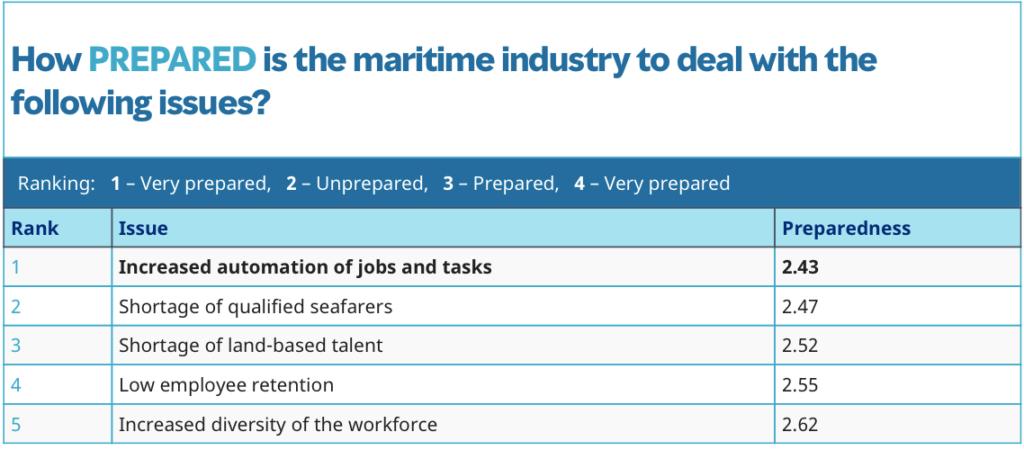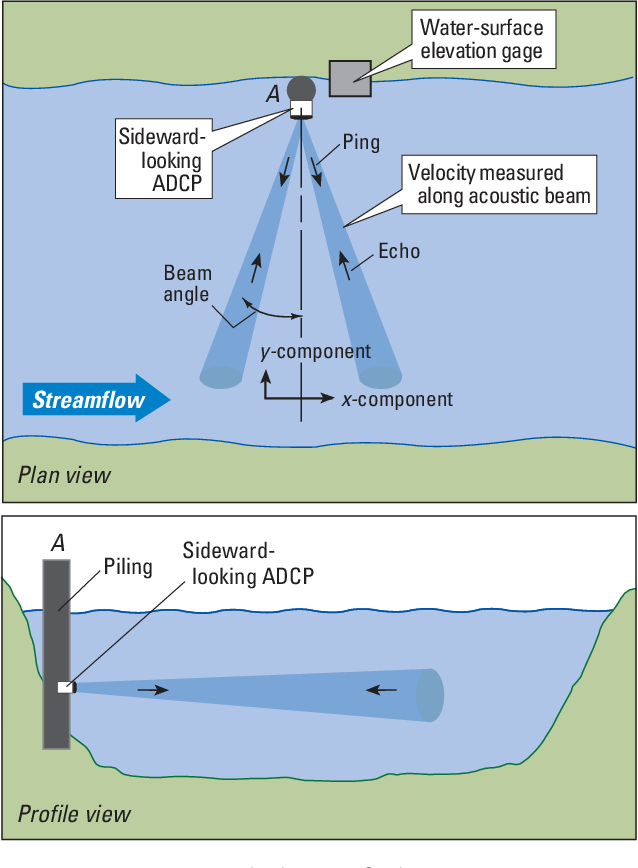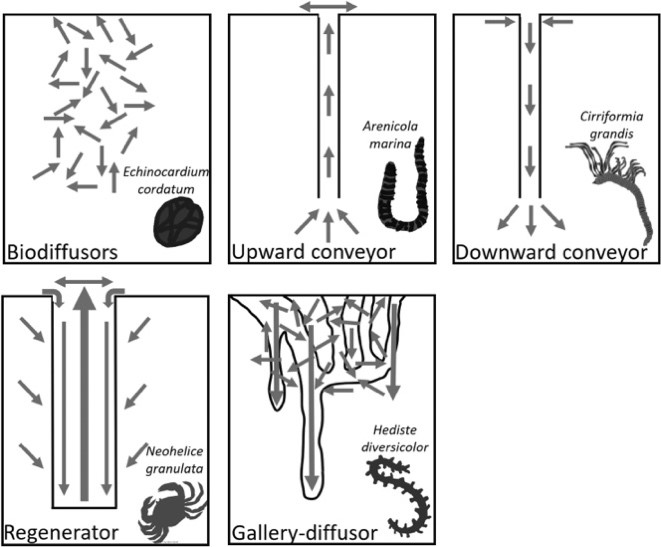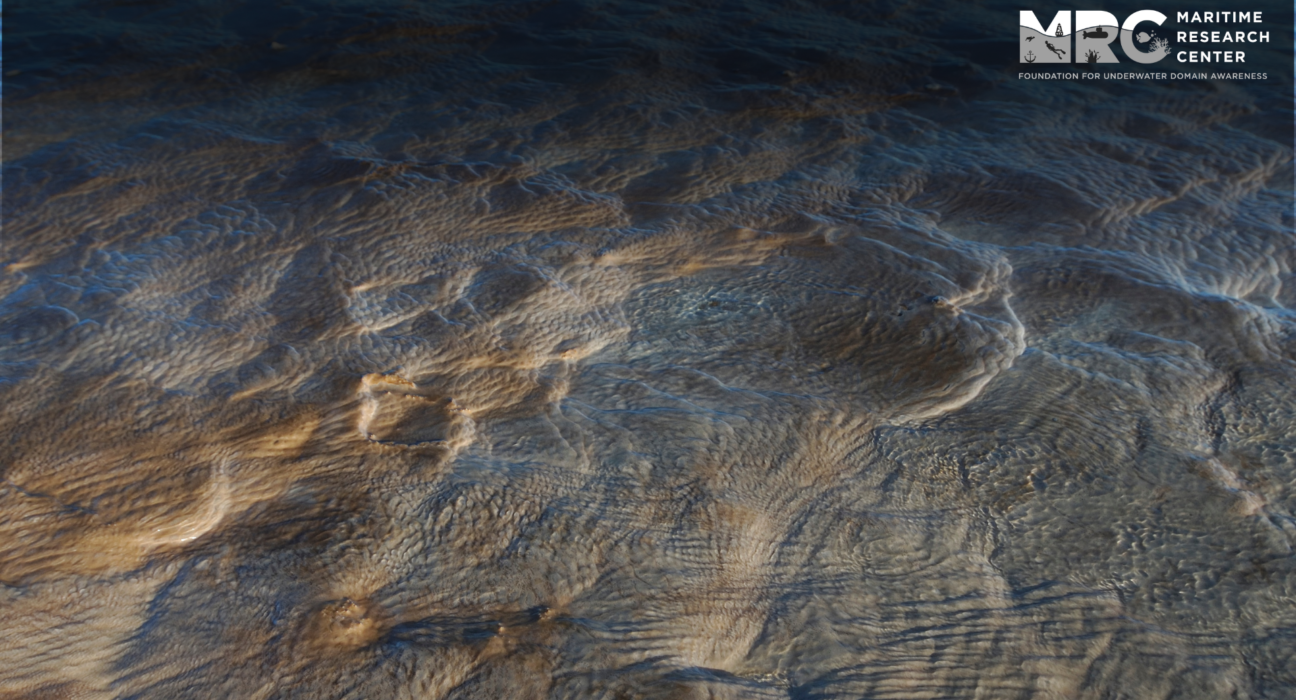- The challenges of the Maritime industry in the current times
- Identification of the need for skilling and the skilling areas is the first step in skill development
- The 3 dimensions of skilling and knowledge requirement of the UDA framework: Acoustic Survey, Underwater Bioscience & Biotechnology, and Underwater Artificial Intelligence & Robotics.
- Importance of surveying in sediment transport studies, the potential of the acoustic survey to accelerate the data collection with high accuracy.
- Relationship of benthic habitats with sediment transport dynamics and how they play a key role in determining sediment stability.
Increasing automation and lack of skilled workers negatively impact the workforce in any industry and the maritime sector is no exception. With unpreparedness for changes, unresolved workforce issues, and a shortage of quality seafarers, the maritime industry is least prepared to resettle the workforce displaced by automation and digital transformation. The table below gives an overview of how much the global maritime industry is prepared to deal with the major challenges of the sector.

The other dimension challenge faced by the industry is the employee diversity issue and the gender ratio. Even though with time there has been increased enrolment of women in education and training, their engagement, retention, and promotion numbers still lag far behind. Also in recent years, many places are witnessing a quick transfer of skills and best talents from one industry to another due to digitalization. To deal with these challenges and attain positive results, there is a need to develop a holistic skill development program that not only identifies the challenges in the maritime industry but also provides the solution and tools of implementation for the same.
The skilling and knowledge requirement of the UDA framework can be divided into three broad categories: Acoustic Survey, Underwater Bioscience & Biotechnology, and Underwater Artificial Intelligence & Robotics.
In this article, we explore, in-depth, the importance of surveying in sediment transport studies with special emphasis on the acoustic survey as it has a potential future in UDA research along with understanding the role of benthic habitats in sediment stabilization and transport dynamics.
- Surveying for Sediment Transport
Sediment transport is the summation of bedload transport and suspended load transport. The suspended load can be measured reliably using acoustic and physical sampling methods from water mixture samples above the bed as a function of time. Bedload however is difficult to measure directly and is estimated either using mechanical traps or by bed form tracking.
Sediment transport measurements in rivers differ from estuaries and coastal areas and hence different techniques need to be employed. In the isolated field sites in rivers, where there isn’t much turbulence, simple mechanical samplers such as bottle-type, trap-type, and pump-type are feasible due to their easy handling and robustness. The accuracy of the measured parameters from them can be increased by increasing the number of samples collected. However, analysis costs with increasing samples may shoot beyond the available budget. So, when large numbers of data need to be collected, optical and acoustic instruments become an attractive option. These instruments require calibration, and their accuracy depends upon the quality of calibration curves used. For this purpose, skilled personnel are required to collect many calibration samples using a pump sampler keeping its nozzle as close as possible to the acoustic/optical sensor. Correct knowledge and operation skills become crucial for obtaining accurate measurements.
In estuaries mechanical instruments do not work well due to the short sampling times involved whose accuracy can’t be improved by collecting more samples as the sediment concentrations keep varying with each tidal cycle. Point samples are taken over the entire water column during strong tides as sediments are well distributed over the entire water column at that time. Flocculation, which refers to the aggregate formation of cohesive sediments of sizes 100-200 µm, is a dominant process in estuaries making the sediments settle at the bottom. Due to this, the data sampling can be confined to the bottom region during weak tidal flows.
In coastal waters, many samples at the same location are required due to high fluctuations. A wide variety of instruments are available including mechanical traps, pump samplers as well as optical and acoustic samplers. The latter measure instantaneous sediment concentrations and are usually placed on a platform or stand-alone tripod in the seabed. Optical instruments require mud concentrations to be < 50mg/l as they are sensitive to fine mud particles. Acoustic sensors fail to work in the presence of air bubbles in the waters.
The Acoustic Doppler Current Profiler is a very well-known instrument used to measure water movement as waves and currents. It generally measures the total water transport across rivers or water channels. However, it also has applications in quantifying suspended sediment concentrations. This is accomplished by measuring the frequency shift via a physical phenomenon known as the “Doppler Effect”, of sound backscattered from suspended sediment particles in water. This intensity of sound which is backscattered off the particles is related to suspended sediment concentration through a calibration procedure. The calibration method varies from research to research. Some utilize the sonar equation principle to calibrate the intensity while some papers calibrate against real-time data obtained from optical backscattering. Either way, the accuracy of the method is measured by comparing the results with laboratory-analyzed data or optical backscatter measurements. Researchers have reported very good estimates from the acoustic method, within the range of 8-10% of the comparing data from the lab or optical methods.
- Role of Underwater bioscience for sediment transport dynamics
Studies have shown a strong correlation between seafloor benthic habitats and seabed composition. Benthos term describes all animals living on or within the sea floor. Morphodynamical studies propose that benthos is one of the leading factors in determining sediment stability in shallow waters. We know already that benthic flora exerts stabilizing effects of sediment by working against the erosion effects of tides, wind, and waves in coastal lands and marshes.

But the contribution of benthos in sediment stabilization hasn’t been studied as extensively as flora and remains largely unexplored. The effect of benthos on the substratum is covered by the umbrella term ‘bioturbation’ which includes digging, swallowing, moving, paving, and ventilating of sediments by the fauna. The impacts of bioturbation on the substrate are classified into 4 categories:
- Change in sediment cohesion
- Sediment loosening
- Induction of fluxes (matter) in the sediment and water column
- Changes in bottom roughness
There are many challenges in developing the whole numerical model of the benthic effect on sediment transport as combining the impact of all coexisting species on a community level makes it a complex modelling problem. The first step of analysis is studying these co-evolutionary processes separately. We start by understanding the different components of bioturbation.
The activities of bioturbation are limited to a depth of 20cm down the surface. In terms of size, benthos can be divided into micro (<0.1mm), meio (0.1-1mm), and macrobenthos (>1mm). In terms of habitat, there is epifauna which inhabits the sediment surface and infauna which resides below the surface. Based on sustenance, there are suspension feeders which filter food from ambient water and deposit feeders living on dead depositions.
The first activity of the sediment reworking is biomixing in which sediment dislocation is driven by benthic activities. There are 5 major reworking modes as depicted in Figure 3.
- Upward conveyors: ingest food at depth and defecate at the surface e.g. Acaryochloris marina
- Downward conveyors: ingest food at the surface and defecate at depth e.g. Cirriformia grandis
- Regenerators: constantly excavate burrows transporting sediments to the surface and depositing suspended sediments in the burrows e.g. Neohelice granulata
- Biodiffusors: constantly mix local sediments e.g. Echinocardium cordatum
- Gallery diffusers: conduct both local as well as advective transport through an extensive gallery network e.g. Hediste diversicolor
The sediment bulk transport rate and direction depend upon the species present.
The size of bioturbating organisms has a strong influence on biomixing. There is an estimation of a 10000-fold increase in biomixing rates per organism if the body length is increased by only 10-fold. Due to biomixing, the top 5 cm of surface sediments gets thoroughly reworked every 3 days. While modelling the biomixing, two defining parameters are used: diffusivity coefficient Db and the corresponding mixed layer depth L. There comes seasonal differences also as the biomixing movements are governed by food availability and temperature. It is noted that the highest mixing rates (Db) are in summer while the deepest mixing columns (L) are in autumn. The ultimate effect of biomixing is sediment destabilization favoring erosion and resuspension.

The next reworking activity is the processing of food which includes ingestion, digestion, and defecation. They affect particle flux and grain transformation. The defecated pellets enhance particle sinking velocity and decrease sediment cohesiveness. This is further accompanied by a decrease in sediment stability and an increase in erosion rate. On top of that, the presence of macrobenthos results in the modification of seabed roughness by forming structures such as tubes, tracks, burrows, faecal casts, etc. They influence the adjacent flow field and can also facilitate sediment deposition by trapping in between structures. Due to the presence of rough structures, the seabed is shielded from strong currents as wave attenuation is enhanced.
The last reworking activity which we will discuss results in the production of “biofilm” due to microbenthic production. Biofilm consists of a complex mixture of microorganisms and their extracellular polymeric substances (EPS). This EPS glues the sediment grains together increasing their cohesiveness and making them more resistant towards erosion.
Having discussed the two most important areas where more research focus and awareness should be present while performing the sediment transport studies, in the next parts we will discuss the methodologies by which skill development could be implemented and will discuss further the role of AI and robotics in sediment transport studies.

Rishika Khanna, IIT Delhi
About Author
Rishika Khanna was a Research Fellow at MRC. She worked on Sediment Management in tropical waters with a focus on Sediment Transport Systems. She recently finished her final year of B.tech programme in Mechanical Engineering at IIT Delhi. She was associated with MRC earlier as an intern. She joined MRC to expand her research domain and apply her learnings to the development of UDA.


